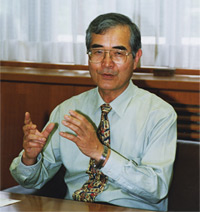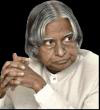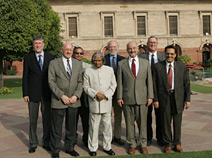 |
|
|
 |
Detector Options for the ILC
If built, the International Linear Collider will hurl tiny electrons and positrons down 26 miles of accelerator, colliding the particles at the center in a microscopic explosion. But what good is it all if you can't see it happen?
Because of the subtle nature of the ILC's proposed work, its detectors will need to collect much more detailed information than any previous detector. In the next five years or so, physicists will decide between several options for the best type of detector for the international collider.
Scientists in three regions of the world are currently designing three different detectors. Two of the concepts, the primarily European-based Large Detector Concept (LDC) and the predominantly Asian Global Large Detector (GLD), rely on large calorimeters: gas-based detectors. North American scientists, such as the ones at SLAC, are mostly focusing on a smaller, more precise silicon detector (SiD).
A silicon detector would use a few compact layers of silicon to track and measure charged particles kicked off from the collision point. SLAC's Norman Graf said that although silicon trackers are already used in collider detectors such as Fermilab's DZero and CDF and SLAC's BaBar, ILC requirements are different.
Read more...
-- Erik Vance, SLAC Today
|
 |
|
|
 |
Upcoming meetings, conferences, workshops
ILC GDE Meeting
Bangalore, India
9-11 March, 2006
LCWS 2006
Bangalore, India
9-13 March 2006
Workshop on Engineering Challenges for Future Accelerators
New Delhi, India
13 March 2006
International Symposium on Detector Development in Particle and Astroparticle Physics and Synchrotron Radiation
SLAC
3-6 April 2006
ILC Americas Regional Team Review
ILC - Americas
FNAL
4-6 April 2006
ILC Software and Physics Meeting
Cambridge
4-6 April 2006
International Accelerator School for Linear Colliders
Sokendai, Graduate School for Advanced Studies
Hayama, Japan
19-27 May 2006
ILC VTX Workshop at Ringberg
Ringberg Castle, Lake Tegernsee, Germany
28-31 May 2006
CALOR 2006
12th International Conference on Calorimetry in High Energy Physics
Chicago, USA
5-9 June 2006
ALCPG Meeting
Vancouver, Canada
19-23 July 2006
View Full Calendar...
|
|
 |
 |
|
|
 |
Friendly Advice —
KEK Publishes Interim Report on International Linear Collider

Prof. Yoji Totsuka,
Director General of KEK |
When you need to make a decision, it is useful to have advice from influential people whom you trust. As the Director General of KEK, this was what Yoji Totsuka did to lead the future of high energy physics in Japan when ICFA announced the technology choice for the ILC. He set up a private ad hoc committee at KEK to discuss how Japan should play a major role in this international scientific project at an unprecedented scale.
The committee first met on 25 February 2005 and was chaired by Hirotaka Sugawara, executive director of the Graduate University for Advanced Studies (SOKENDAI) and former director general of KEK. The rest of the initial eight members included Akihito Arima, nuclear physicist and the chairman of the Japan Science Foundation, also former minister of MEXT, Yoshitaka Kimura, accelerator physicist and professor emeritus of KEK, Takeshi Komura, governor of Development Bank of Japan and former high-ranking official of Ministry of Finance, Takeshi Sasaki, professor at Gakushuin University and former president of University of Tokyo, Seiichi Takayanagi, techonogy advisor of TOSHIBA Corporation, Yuichi Takayanagi, director of Tamarokuto Science Center and former science commentator of NHK, and Muneyuki Date, president of Foundation Advanced Technology Institute. Starting with the fourth meeting on 11 July 2005, Motoyuki Ono, president of Japan Society for the Promotion of Science and former vice minister of MEXT joined the committee.
Read more...
-- Youhei Morita
|
 |
|
|
 |
From SLAC today
6 March 2006
Physics Galore in Bangalore
This week, SLAC scientists will say namaste to physicists from around the world during a meeting of the minds in Bangalore, India.
Eleven accelerator physicists from SLAC are headed to India to discuss the International Linear Collider. The much-anticipated event is a combination of two meetings: the Linear Collider Workshop and the ILC Global Design Effort Meeting.
Read more...
From Journal du CNRS
March 2006
Towards a Europe of particles
Which particle physics for tomorrow? Four hundred European
researchers met in Orsay to discuss it. Passionate meeting and
debates, which should lead to a common policy for the twenty next
years.
"Whatever "Europe sceptics" might think, Europe continues his walk
ahead... and the scientific community has just brought a new proof of
it. During three days, four hundred specialists in particles 1 - out of 2000
researchers in Europe! - actually met in Orsay of January 30 at February 1, 2006..."
Read more... (In French)
From KEK
3 March 2006
Interim Report from ad hoc committee on the Linear Collider Project
"...The purpose of this ad hoc committee is to advise the Director General (DG) of the High Energy Accelerator Research Organization (KEK), concerning appropriate actions to take towards realization of the future "Linear Collider" (LC) Project..."
Read more... |
|
 |
 |
|
|
 |
Meeting the President of India

President of India, Dr APJ Abdul Kalam |
One reason for our holding a GDE meeting in India is to provide an opportunity to explore the possibility of Indian participation in both the GDE and ILC R&D program. These discussions will hopefully be a first step toward an eventual full partnership for India on the ILC. Several of us have come to India in advance of the Bangalore GDE Workshop, specifically to meet with government officials, and to visit Indian institutions and laboratories.
The highlight of our government visits was a one-hour visit with the President of India, Dr APJ Abdul Kalam. The purpose of the meeting was to discuss collaboration on the ILC. In addition to myself, our delegation consisted of Jonathan Dorfan (SLAC Director), Albrecht Wagner (DESY Director), Pier Oddone (Fermilab Director), Bob Kephart (Fermilab) and Shekhar Mishra (Fermilab). Shekhar arranged for the meeting, and we were also accompanied by Indian physicist, Professor RK Shivpuri of Delhi University.
Our meeting with the President was very interactive and stimulating. He had read materials that were sent to him; he had previously visited CERN, and he recently attended a meeting in India on grid computing. The discussions had a wide range, but he made several important points. First, it was clear that the President resonates with the kind of science we do and especially with our goals of answering the "big questions." He told us an anecdote about a recent visit to a school, where some of the students asked him very probing questions about the universe. He commented what a worthy human endeavor it is to try to understand such questions. On a more practical level, the President asked us questions about the goals of the ILC and how they relate to what will be done at the LHC, our needs for computing to bring the data to India, other possible applications of ILC technology that might be beneficial for India, and more generally, what are the benefits to India in participating?
Our meeting was at the Presidential Palace, an impressive very large sandstone building. Following the meeting, we adjourned outside for a group photos (see today’s image of the week) and for a walk through the beautiful and blooming Presidential garden.
Read more...
--Barry Barish
Director's Corner Archive
|
 |
|
|
 |
|
Discovering the Quantum Universe
Discovering the Quantum Universe is now available to download online. If you would like a copy of the report sent to you, contact Judy Treend.
Particle Physics News on Interactions.org
Sign up for the Interactions.org newswire and receive the latest press releases from particle physics labs around the world.
|
|

Delegation visiting the President of India, from left to right: Albrecht
Wagner, Jonathan Dorfan, Shekhar Mishra, President of India Abdul Kalam, Barry Barish, Pier Oddone, Bob Kephart and Ram Shipuri.
|
|

